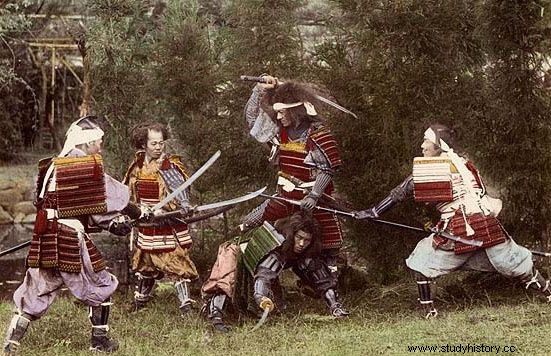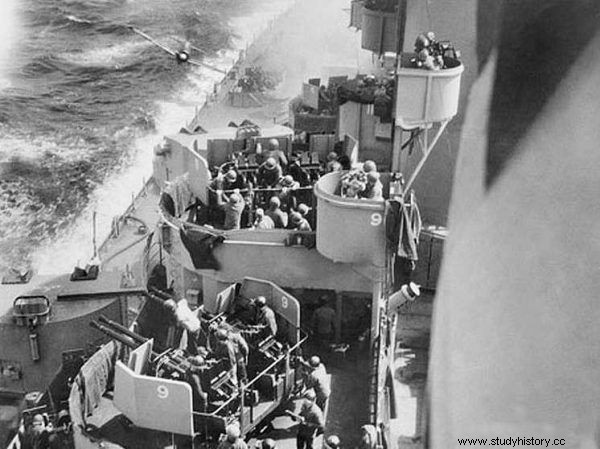When recalling the history of the Land of the Rising Sun, we often think about military conquests and the samurai tradition. However, centuries ago, a mighty empire faced a threat that could destroy not only its past, but also its future ... The Mongol invasion was an exceptionally dark chapter in the history of Japan.
This difficult and complicated period has recently become the basis of a virtual story - the console game "Ghost of Tsushima". Nate Foks, creative director of Sukces Punch studio, and Chris Zimmer, co-founder of the company, admit that the idea of traversing feudal Japan in the body of a samurai seemed unusual to them from the very beginning. What secrets are written in pop culture form?
Heir to Genghis Khan
We go to the year 1274, when the Mongol empire almost completely rules on the Asian continent. However, his victorious - and extremely brutal - march may soon be interrupted. All thanks to the island located exactly in the middle of the Korean Strait. Tsushima - because we are talking about it - will soon become a field of hellish battle between the Mongolian and Japanese forces.
This is a clash between two giants. The peak of the Mongol empire's power, at least in terms of territory (then it occupied an area of approximately 33 million square kilometers), fell in the second half of the 13th century. It was then that was headed by Kublai Khan (1215-1294), grandson of the famous Genghis Khan.

photo:Marco Polo's public domain in front of Kublai Khan.
Kublai Khan received a thorough education and took care of the development of crafts, science and arts (including military arts). In 1260 he became a Mongol khan. Gradually, he was conquering territories belonging to neighboring countries. He finally moved the capital of his empire from Karakoram to Hanbalyk, which is today's Beijing.
In 1271 he founded the Yuan dynasty and eight years later became Emperor of the Middle Kingdom. Meanwhile, he launched an extremely bloody invasion of Japan. And the first stop of the military campaign was exactly Cusiszma.
Blood in the fog
The Mongols required the recognition of absolute sovereignty in every part of their empire - conquered rulers were required to swear an oath of allegiance to them. Japan, however, did not want to agree to it. And this despite the fact that the Khan repeatedly sent his messages to the Land of the Rising Sun, hoping that he would avoid unnecessary bloodshed.
The first diplomatic mission was launched in 1266, but the political truce was then stopped by Koreans, who did not want to become the next "stop" on the road of the Mongolian army. Two years later, other envoys managed to reach the city of Dazaifu on the island of Kyushu. Their mission was unsuccessful:they were sent back empty-handed by Masamuro Hōjō, the regent in power on behalf of the shogun Koreyasu, who refused to surrender Japan.
Kublai Khan felt offended - the enemy was openly disregarding him, and yet he, as the commander-in-chief, could not afford to lose his authority in the eyes of his subjects. Even so, he still harbored hope. However, further attempts at pacting in 1270 and 1271 were also unsuccessful. Finally, a descendant of Genghis Khan decided to use the argument of force next time.

Samurai in traditional armor.
His forces included - according to various estimates - up to 30,000 Mongolian, Chinese, Jurdic and Korean soldiers. One of the first targets of the invasion was the aforementioned island of Csushima, which at that time was an exceptionally important trading center. An attempt by the last samurai to defend it is the starting point for the plot of "Ghost of Tsushima".
The Mongols were characterized by exceptional cruelty - for example, they cut holes in the hands of captured prisoners to use them as living shields. But the differences between them and the Japanese were not only in terms of strategy, but also weapons. The former had composite bows that guaranteed the advantage of range. Who knows what would be the final fate of the samurai people if not for the intervention of the forces of nature ...
Blow of the divine wind
Today, the word kamikaze is unequivocally associated with Japanese military formations from the Second World War, which were characterized by a very specific type of philosophy. Their soldiers sacrificed their lives during the attack on the enemy, piloting specially adapted planes or water units. Originally, however, it did not refer to suicidal acts of courage, but to… supernatural interference.
The "divine wind" initially was the name for the typhoons which twice (in 1274 and 1281) thwarted the plans of the Mongol fleet. As was the case before the attack on Kyushu - one of the largest naval offensives in history ended in a disastrous defeat for the invaders.

Kamikaze during an attack on an American ship
The invasion lasting over 50 days was interrupted by a blast of divine wind. The Mongol warriors, fleeing in panic from the typhoon, were saving themselves with the last of their strength, but their subsequent ships crashed against the coastal rocks . The survivors of the great army (and it is estimated that it could have even 100,000 people) died on the high seas.
When recalling the history of the Land of the Rising Sun, we often think about the triumphs of brave samurai. It was no different this time, although the events that inspired the creators of the game "Ghost of Tsushima" were very different ...
